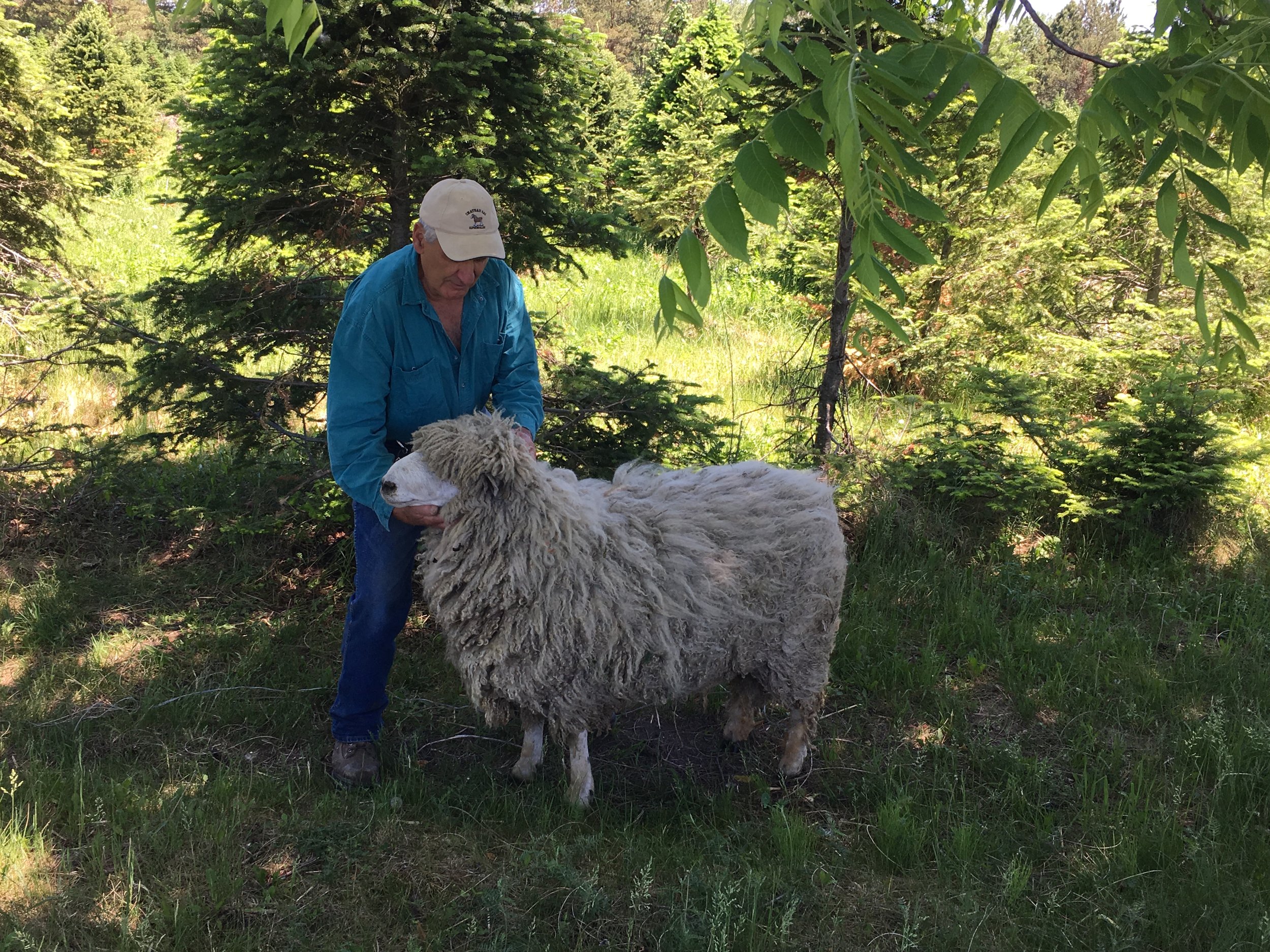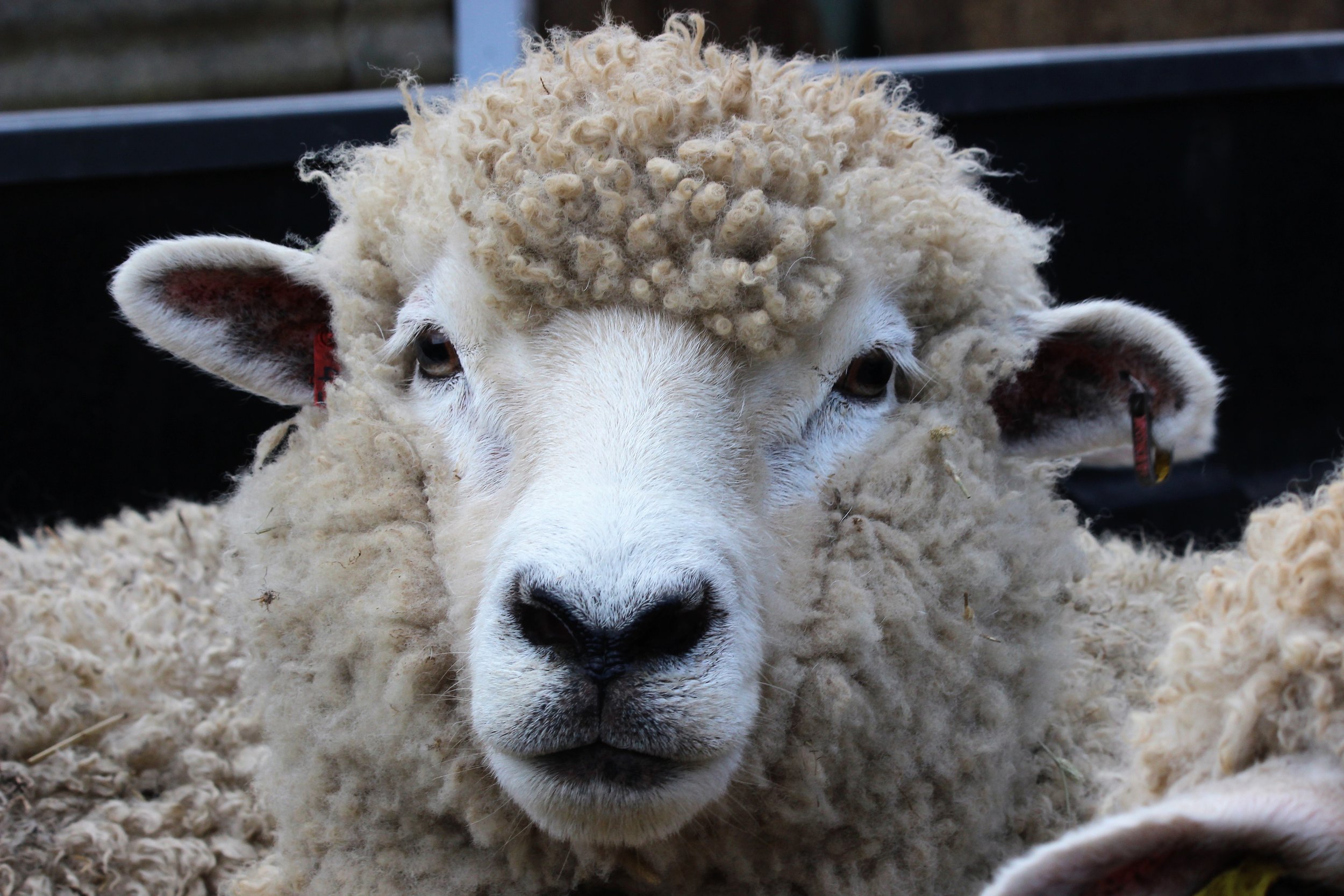
Heritage sheep providing natural solutions for the future
Shropshire Ewe
Strong mothering instincts within ewes are essential for any breed of sheep. Here a Shropshire bonds with her lamb.
Heritage Sheep Breeds
-

Barbados Blackbelly
From their beginnings in West Africa, to Barbados to North America, the Barbados Blackbelly sheep has adapted and thrived in a variety of environments. This versatile, prolific hair sheep is hardy, disease-resistant and easy to raise. It is perfect for homesteads and small farms. They are well suited for weed programs and rehabilitating rough pastures as Blackbellys love to browse as well as graze. The distinctive black markings are the hallmark of the Barbados Blackbelly breed and both rams and ewes are naturally polled.
-

Border Cheviot
Border Cheviot are believed to date back to the time of the Spanish Armada in the 1300's. Native to the Cheviot hills between England and Scotland, the breed as a whole is hardy and able to survive in harsher conditions than their downs counterparts. Border Cheviot make good terminal outcross sires in commercial settings.
-

Border Leicester
Border Leicester were first bred by Robert Bakewell of Dishley, Leicester, UK in the 1700's. Initially called Dishley Leicester, with varying crosses to other breeds, two distinct lines of Leicester were bred - farmers found a strong preference with one line and in 1850 the name Border Leicester was adopted.
The breed was first imported into Canada in the mid-1800's and has maintained a presence ever since. Although not as numerous in number, as their peak in popularity during the 1950's, Border Leicester are still valued for their traits. The ewes are particularly good mothers and their lambs show a good growth rate. As with heritage sheep breeds, Border Leicester do not need a diet which is heavy in proteins.
Their wool was used for carpets in the 1940's and 50's, but in recent years has found popularity among spinners, for the lustre and quality of the fibre.
-

Canadian Arcott
A native Canadian sheep breed - the Canadian Arcott. Developed at the Animal Research Centre in Ottawa, the breed was specifically meant to show strong meat characteristics, able to thrive on pasture or in a dry lot setting and also be "thick" throughout. Canadian Arcott are considered to be medium in size.
-
Corriedale
Corriedale are from New Zealand. Originally the intention was to improve the traits of the Merino by outcrossing with longwool breeds, such as Lincoln. Continual breeding selection, meant the development of the Corriedale breed. Highly prized for their wool, as wool manufacturing declined with the introduction of synthetic fibres, Corriedale lost their place on many farms.
-
Cotswold
Cotswold are descended from long wool sheep brought to the UK by the Romans. These sheep formed the basis of the Cotswold, Lincoln and Leicester breeds. Cotswold wool was so highly prized, their wool helped to build cathedrals and churches in England - inclusive of Gloucester Cathedral during the 15th century. Making Cotswold a part of the world's cultural heritage.
Cotswold were imported to Canada in the 19th century and were one of the most popular breeds of the time. During the 1920's, Merino became more favoured for wool and breeds such as the Suffolk and Dorset overtook Cotswold in terms of meat production. The overall population decreased in Canada and worldwide during a similar time period. Cotswold are designated as "endangered" in Canada and in the UK particular attention is being paid to their preservation, alongside other longwool breeds.
Cotswold are large, docile sheep. Ewes are good mothers and are ideally suited to pasture management. Due to the lustre of their wool, Cotswold are finding a new niche market among spinners.
-

Dorset Horn
Dorset Horn sheep first came to Canada in the 19th century. Up until the 1950's Dorset Horn remained popular. However, after the introduction of the Polled Dorset, numbers saw a steady decline.
Canada's Dorset Horn are close in type to the English Dorset Horn population. In other international populations there has been a move towards a larger statured sheep. Making Canada's population special in of itself.
Dorset Horn are able to breed "out of season". They are medium sized sheep. Their fleece is strong, extremely white and free of any other colouring.
-

Jacob
Jacob sheep are designated as "critical" in status with HLC. Similar to White Park cattle, Jacob sheep are an ancient breed - kept for generations by gentry in England in parks, in the case of Jacob for their novelty. With the end of the parks, the breed slipped drastically in numbers, but has enjoyed an increase in population in recent years.
Still true to their nature, Jacob sheep do not show the same flocking instinct as other breeds. Known for their distinctive colouring and horns - the breed is now utilized for meat and fibre production. The Jacob fleece is considered to be medium coarse and often described as light and soft, with little lanolin in comparison to other breeds.
-

Lincoln Longwool
Lincoln Longwool were established as an improved breed in 1796, with longwool sheep having been recorded back to the 1300's. At arguably the height of their popularity in the 1800's, the breed was imported to Canada. Lincoln are a large British sheep breed - their fleece, described as heavy and lustrous is highly prized by spinners.
A Lincoln Longwool fleece can weigh from 6.8-11kgs and have a staple length of 18-20cms. Aside from this attribute, Lincolns are considered to be generally hardy, have few lambing problems and be docile in temperament.
Their wool can be utilized for textiles, felting and tapestry work. The lustre of Lincoln wool is a particular feature.
Currently there are 800 ewes left in their native UK, with most concentrated in Lincolnshire. In the event of a disease outbreak, it could prove to be devastating to the population as a whole. Translating to flocks in other countries being an important insurance for the breed.
-

Navajo Churro
Navajo Churro are native to America and are culturally significant for their ties to primarily the Navajo, but also Spanish Churro's.
These sheep are described as coarse and long woolled - being suitable for milk, meat and fibre production. They come in a variety of colours.
-

North Country Cheviot
North Country Cheviot are well known for hardiness, independence, strong mothering instincts. Offspring are born with a definite will to live and longevity. Although their weight gains are considered to be average - this is easily offset by the quality of their carcass. North Country Cheviot because of their origins as hill sheep do well on rougher pastures. Their attributes also make purebred rams popular in cross breeding programs.
-

Rambouillet
Rambouillet have origins dating back to the 1700's. King Louis XIV purchased 300 Spanish Merino sheep from his cousin. These sheep through a breeding program became the French Merino or Rambouillet Merino. Their wool as is suggestive of the Merino element is highly prized by spinners.
-
Romney
Romney or Romney Marsh as they were known are a longwool sheep breed, originating in Kent, England. Originally noted in the 13th century, the breed was officially recognized in 1800 and exported around the world.
Romney are docile and easy to work with. They do best as the sole breed on a farm and don’t tend ’to do well with commercial breeds.The lambs show a steady growth rate and their wool is in demand for spinning.
-

Soay
Soay sheep arre descended from feral sheep found on the island of Soay, part of the St. KIlda Archipelago on the West coast of Scotland. Although the sheep have been domesticated, they remain very similar in type and nature to their ancestors.
-

Scottish Blackface
Scottish Blackface are among the most hardy, adaptable sheep breeds. A common sight in their native Scotland, unfortunately their numbers are not the same in Canada. In 2019, a total of 8 sheep were registered
The breed has an ancient history, reference is made to Scottish Blackface in 12th century texts.
-
Shropshire
The exact breed development of Shropshire sheep is unknown, however by 1848, the breed became known as the Shropshire.
Imported into Canada in the 1860's from their native England, Shropshire were extremely popular. The sheep became appreciated for their hardiness, strong maternal instincts, good milk production, heavy fleece and the rams use as a terminal sire - to improve carcass quality. Unfortunately, the breed declined drastically in number during the 1950's - after breeders focused too heavily on specific traits and lost some of the original breed qualities.
Canada is fortunate to have maintained small pockets of true to type Shropshire.
-

Southdown
Southdown are ideal for starter flocks, as a result of their medium size and quiet disposition.
Originally recognized in the early 1800's, Southdown went on to form the basis of a number of breeds.
Traditionally reared for their meat and wool, Southdown have also found a place in vineyards - their short stature making it possible for the sheep to graze inbetween, but not the actual vines.
Resources
-
Canadian Sheep Breeders Association
The Canadian Sheep Breeders Association is responsible through CLRC for the registration of sheep in Canada.
-

Canadian Campaign For Wool
The Canadian Campaign For Wool is part of a global effort to raise awareness regarding the qualities of wool. Including it’s natural sustainability.
-

Rules For The Import Of Small Ruminants From The USA
If you are considering the importation of rams and ewes, please ensure to read the CFIA guidelines and use the APHIS system for the personal import of small ruminant semen.
-
Heritage Sheep Reproduction
Heritage Sheep Reproduction is operated by Deb Nelson Gould, out of the United States. HSR works in partnership with OC Flock Management in Canada to import UK semen. There is an extensive list of breeds available inclusive on our conservation list of: Dorset Horn, Shropshire, Border Cheviot, North Country Cheviot, Cotswold, Leicester Longwool, Lincoln Longwool and Southdown.
For those interested in other breeds amongst those listed: Teeswater, Clun Forest, Shetland, Texel, Kerry Hill, Clun Forest and Ile De France.
Please remember to fill out the interest form on the HSR website, if you would like more information on any of these breeds.
-

OC Flock Management
OC Flock Management, Alberta is owned and operated by Dr. Lynn Tait. OC Flock Management not only work to import semen alongside Heritage Sheep Reproduction, but also offer reproductive services for small ruminants, as well as semen storage.
-

Canadian Border Leicester Group
Are you interested in the Border Leicester breed, or are a current breeder looking for new genetics? Look no further than the Canadian Border Leicester Facebook group. A place for Border Leicester breeders in Canada to connect and discuss the introduction on new lines to the national flock.
-
Australian Stud Sheep Breeders Association
The Australian Stud Sheep Breeders Association is an umbrella association for traditional type British breeds of sheep in Australia. The ASSBA is a great resource for Australian breeders when considering the importation of semen and or live animals.
-

HLC Sheep Representative
Do you have questions? HLC’s Sheep Representative can help.






